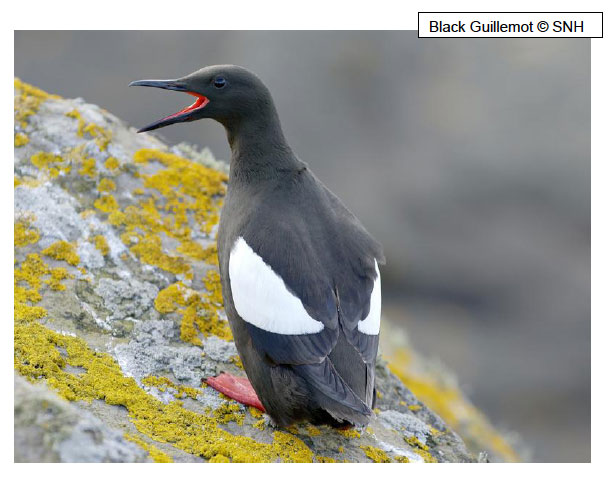Report to the Scottish Parliament on Progress to Identify a Scottish Network of Marine Protected Areas
This reports on which sites are currently included in the MPA network and outlines progress on Nature Conservation MPAs, Historic MPAs, and Demonstration and Research MPAs.
What else can MPAs do?
While the main aim is to protect rare, threatened or declining, or representative species, habitats and geological features for their own sake under the principle of sustainable use, there are a number of other reasons we should work towards a well managed network of MPAs in the wider context. Some of these reasons are harder to be certain of as we are constantly learning about the natural and ecological processes of our seas, but we believe that MPAs as a whole can contribute to a degree for a range of other things we either depend upon or take for granted.
Take for example the direct benefits we gather from the sea. These are things that can be harvested, like the fish and shellfish we eat and export, or enjoyed, such as the already important and growing wildlife tourism sector. MPA networks can help protect the complex, biologically diverse habitats that provide hiding places or nurseries for juvenile fish and shellfish to grow and feed, without which there would be less of a foundation for life to continue in the sea as we know it. The same applies to protecting important areas for critical lifecycle stages of mobile species, such as basking sharks and cetaceans. In addition to MPAs simply for the protection of these species, many people are attracted to a sea that is rich and healthy enough to support resident or migrant populations of majestic creatures such as whales, dolphins and basking sharks. A direct benefit is that we can visit these species in the wild, through responsible wildlife tourism operators who can earn money for taking people on nature watching trips out to sea or on the coast.
Valuing and protecting places in the sea that are functionally important as part of the ecosystem, often created by other living organisms, can offer a two fold benefit to the seas. By protecting reefs and sea beds we not only provide breathing space for threatened or declining species and habitats but also give refuge for other species, some of which are commercially important, such as sandeel and herring. By protecting these areas we increase the chances that our seas continue to supply us with enough fish and shellfish to eat and export, thus supporting coastal communities by helping ensure there will always be enough fish to fill the nets.
The seas also offer us indirect benefits, such as nutrient cycling or reducing the effects of climate change. These are benefits that we currently gain no direct economic output from, but which provide services that would be very costly to manage ourselves if these services disappeared.
Habitats such as kelp forests, seagrass beds and saltmarshes are not only again important habitats for juvenile fish, but all are also recognised by the United Nations Environment Programme as important carbon sinks. Carbon sinks store carbon dioxide or CO2, helping to regulate climate and contribute to mitigating change, much as peat bogs do on land.
Species like the burrowing sea cucumber or sea urchin stimulate nutrient cycling by digging burrows into the sea bed. The holes they dig bring nutrients down into the sediment that would otherwise not be reached, much like earthworms in a garden. This helps release plankton larvae and nutrients into the water column which support the entire ecosystem, from small fish and corals to huge filter feeders like the 10 metre minke whale.
Other things we might forget is that some reefs and kelp beds also help protect the coast from storms, much like coral reefs and mangroves in the tropics, but these kelp forests and offshore reefs are much closer to home. Also some of these areas may contain organisms that have important biopharmaceutical uses yet to be discovered by science; if they disappear then we will never know if we could have benefitted from them.
Ecosystems are very complex, and it is thought that the more complex an ecosystem is the more resilient it is to change. Therefore, if it is damaged or if a species or habitat is removed from that ecosystem, the chances of survival for those services reduce as the ecosystem becomes weaker. However by conserving or allowing the species and habitats that make up that ecosystem to recover, we can be more confident of the continuation of the long term benefits the marine environment provides.
Finally there are what are known as non-use benefits. These are more to do with cultural values, protecting places simply to know that they are there to be enjoyed enriches us all. We take for granted many of the things we read about or watch, such as bright, colourful fish or reefs, or strange shaped deep sea curiosities, and to lose them would be a loss to future generations that will not be able to experience them. It is difficult to put a true value on this, but the high quality experience and increasing knowledge of Scotland's seas can be better preserved through measures such as MPAs.

Contact
There is a problem
Thanks for your feedback